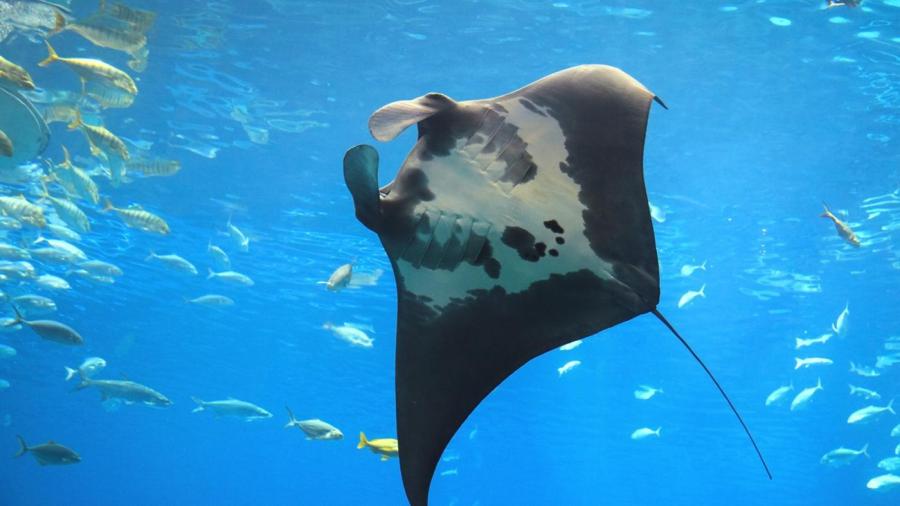What Is the Difference Between a Manta Ray and a Stingray?

Manta rays and stingrays differ in size, diet and appearance. Manta rays are significantly larger than the stingrays, with oceanic mantas reaching a size of 23 feet from wing tip to wing tip, and reef mantas, a smaller species, reaching a wing span of 9 to 15 feet. Larger stingrays grow to 6.5 feet in length. The manta ray also lacks the characteristic venomous stinger found on the stingray’s tail.
Manta rays and stingrays are both cartilaginous fish, which makes them closely related to sharks and other rays. They use gills to take oxygen out of the water. Manta rays are found in tropical, sub-tropical and temperate waters in oceans around the world. Stingrays prefer warm waters as well but inhabit both freshwater and saltwater. The body of the stingray is flat and round or triangular in shape with a long thin tail. Colors vary depending on habitat and species, but they are usually murky and mottled for camouflage. The manta ray exhibits a bat-like silhouette with flexible tapering wings it uses to “fly” through the water. It is a dark mottled grey on top and white underneath. The manta ray has a wide, gaping mouth that it uses to gather minuscule zooplankton, its primary food source, as it glides through the water. The stingray’s mouth is located on its underside and features powerful teeth that help it consume crustaceans, worms and small fish.





